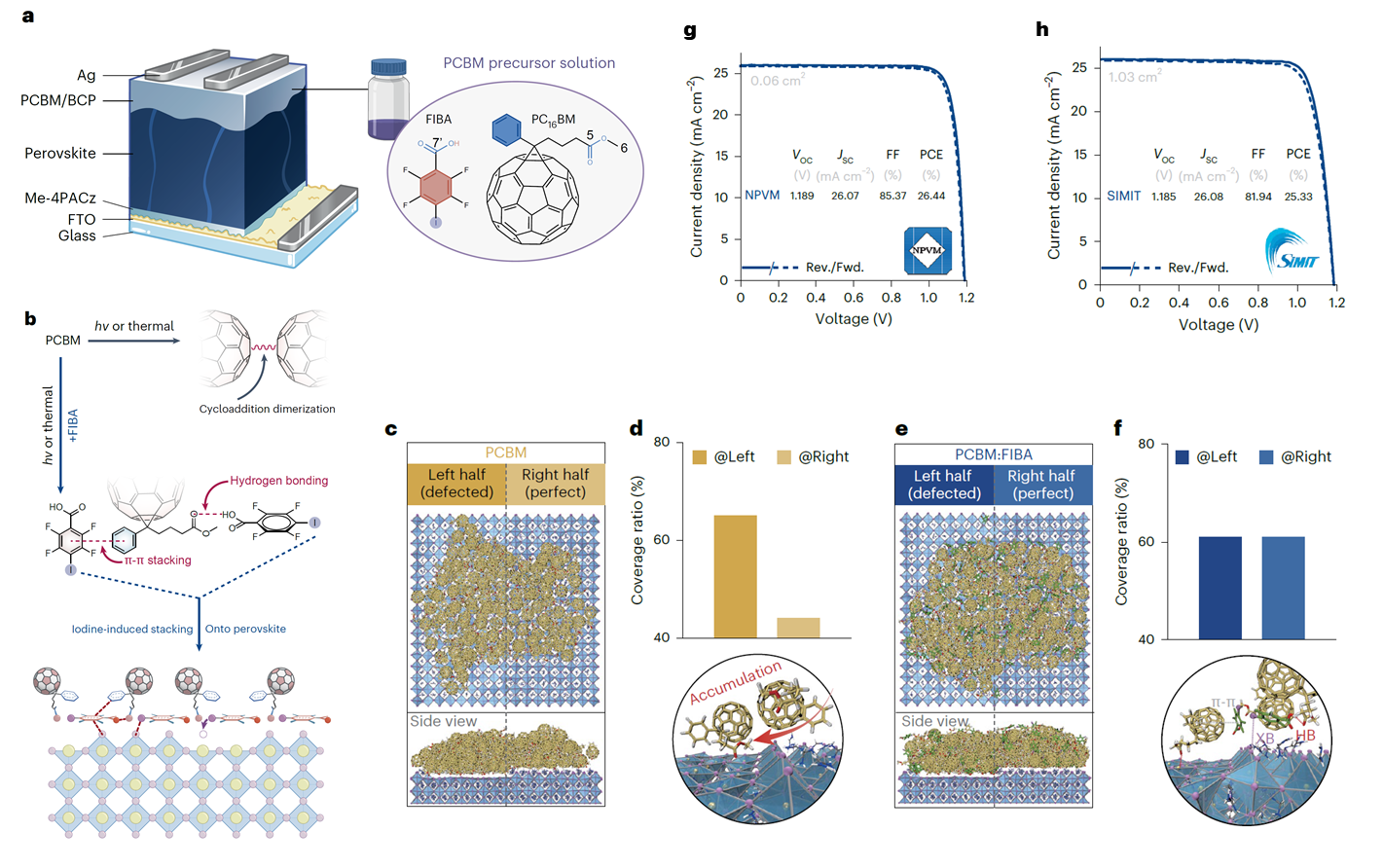
Recently, the research team led by Prof. PAN Xu from the Institute of Solid State Physics, the Hefei Institutes of Physical Science of the Chinese Academy of Sciences, have developed an optimized transport layer for inverted perovskite solar cells, achieving a breakthrough that enhances both device efficiency and stability.
The related findings were published in Nature Materials.
Perovskite solar cells have achieved power conversion efficiencies close to 27%, positioning them at the forefront of next-generation photovoltaic research. Previously, the team developed a novel strategy to homogenize cation distribution within the perovskite absorber layer, offering a new pathway for absorber optimization. In addition to the absorber, the semiconductive transport layers play critical roles in charge separation and transport. Among them, [6,6]-phenyl-C61-butyric acid methyl ester (PCBM) is widely used as an electron transport material, but it readily forms dimers under light and heat, leading to reduced charge mobility, efficiency loss, and accelerated degradation—a major challenge for practical applications.
To address this issue, the research team analyzed the stacking behavior of PCBM molecules on different perovskite surface terminations and identified molecular orientation heterogeneity as a key factor promoting dimer formation. Based on this understanding, they designed a PCBM precursor additive—2,3,5,6-tetrafluoro-4-iodobenzoic acid (FIBA)—which interacts with PCBM molecules to guide their ordered stacking on the perovskite surface, thereby homogenizing molecular orientation. This alignment suppresses the topological matching required for the cycloaddition reaction, effectively inhibiting dimer formation.
With this strategy, the team achieved impressive device performance: 26.6% efficiency for small-area cells (~0.1 cm²), 25.3% for 1 cm² single-cell devices, and 21.3% for large-area modules (762 cm²). In addition, the optimized devices showed exceptional stability, retaining over 85% of their initial efficiency after 2,000 hours of continuous operation under combined heat, humidity, and light stress.
This work provides a practical and effective route toward simultaneously improving both the efficiency and stability of perovskite solar cells.
This work was supported by the Youth Team Program for Stable Support of Basic Research of the Chinese Academy of Sciences, the National Key R&D Program of China, and the National Natural Science Foundation of China.

(a) Schematic illustration of the perovskite solar cell structure and the additive molecule; (b) mechanism of PCBM dimerization and the role of the additive; (c–f) molecular dynamics simulation results; (g–h) photovoltaic performance of the solar cell devices. (Image by PAN Xu)